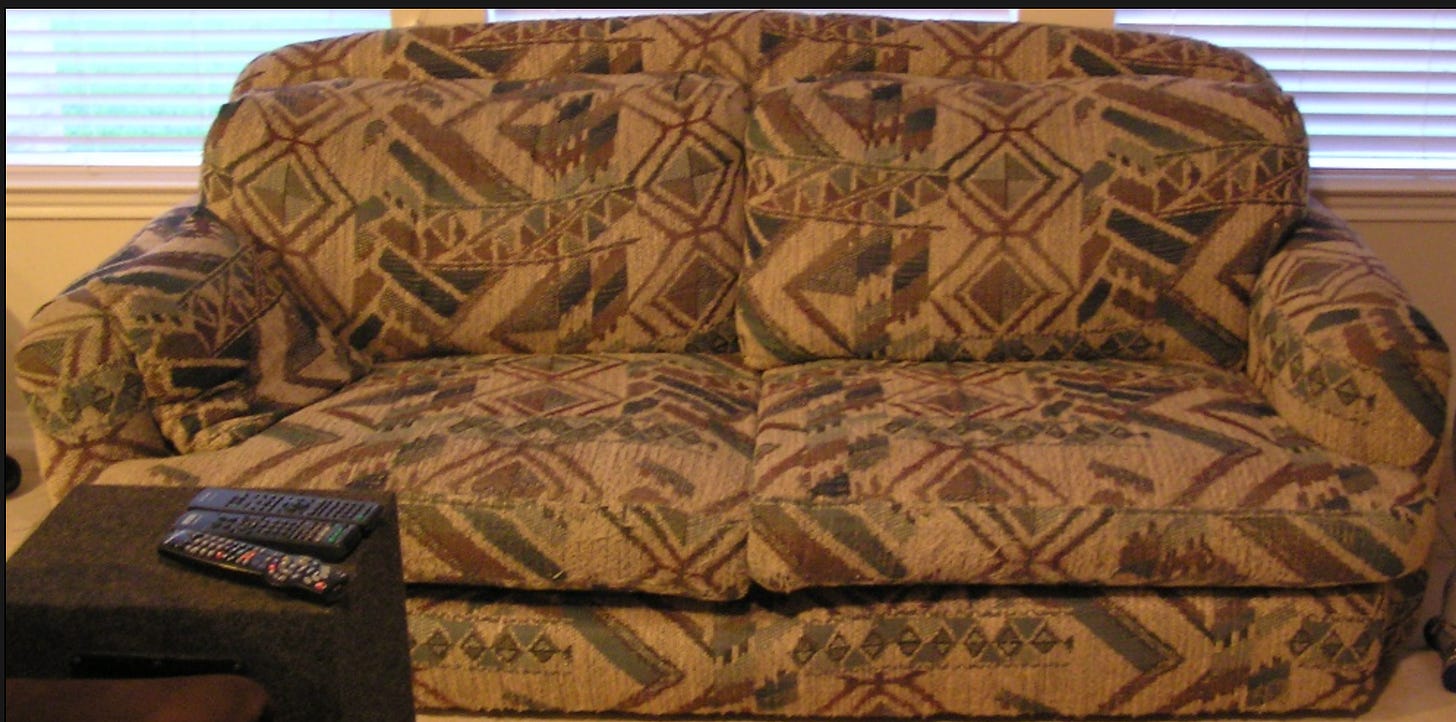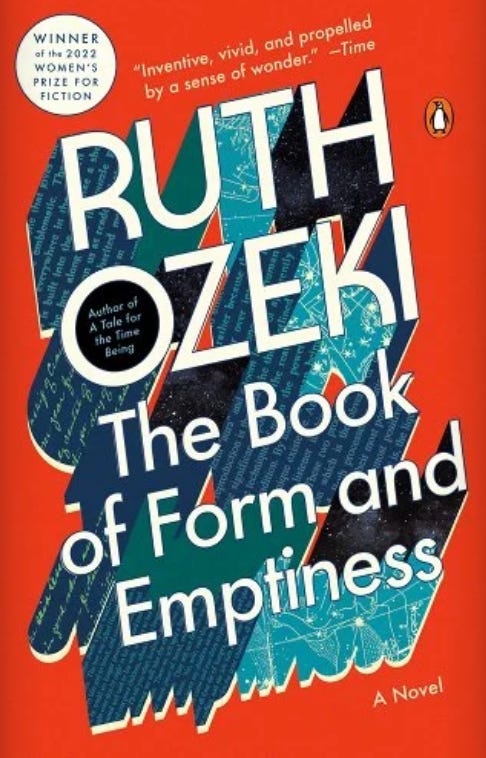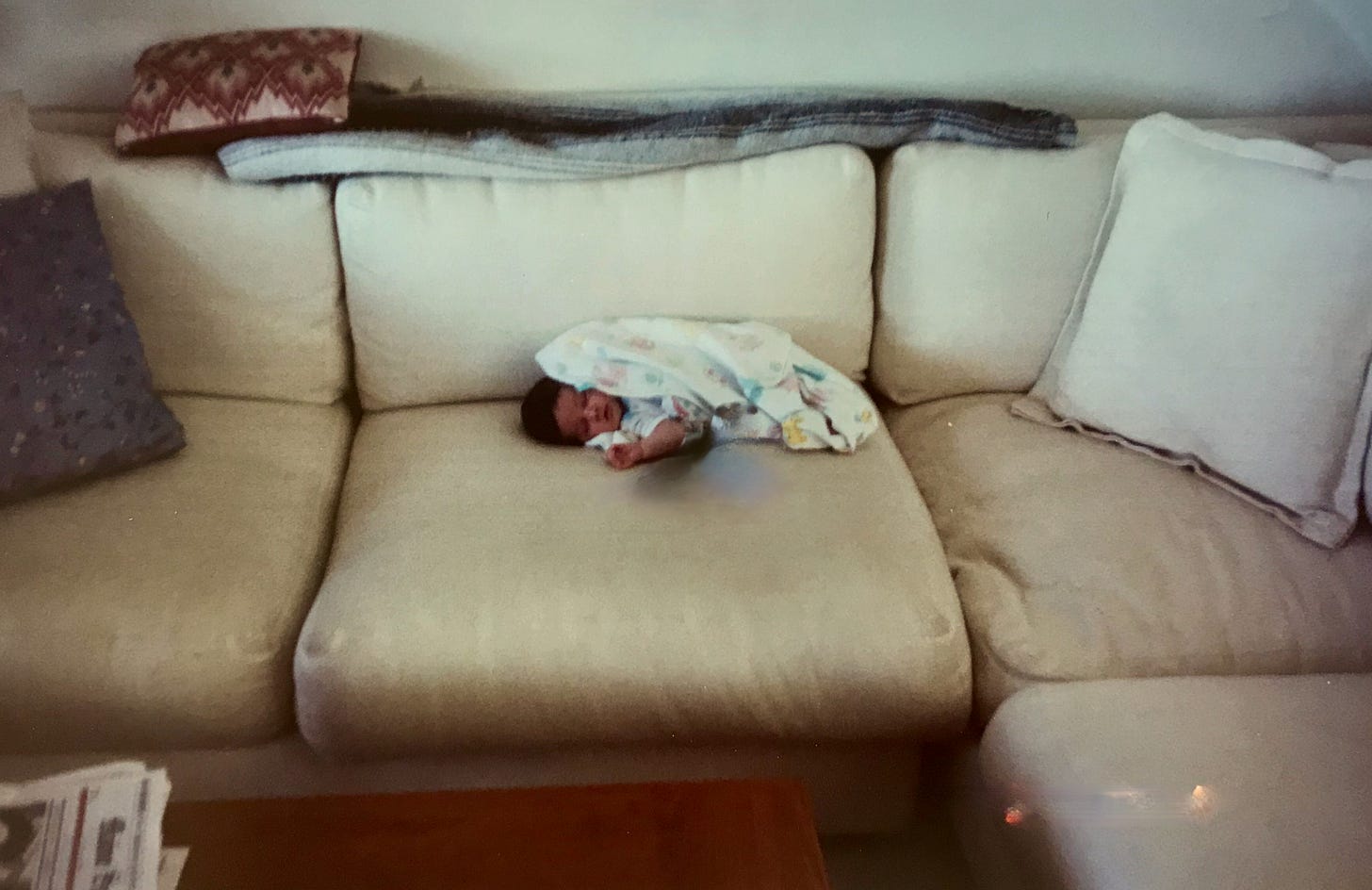Before we begin…
We are surrounded by our things - the things we have, the things we want, the things we want to shed. They are repositories for our stories but, maybe, also have stories of their own. Pick one of the things that you are looking at right now. If it spoke to you, what might it say? What is its story - how did it come into your life? Why is it still here? If you sense it is time to let go, why? How do you feel about that?
Welcome! You’ve reached Spark. Learn more here or just read on. If you received this from a friend, please join us by subscribing. It’s free! All you have to do is press the button below. If you have already subscribed, welcome back! If you see something you like, please hit that heart so others can find us more easily. And if this email is truncated in your inbox, just click the headline above to come on through and read everything all at once.
I have things on my mind
I’m thinking about things, the things I love, ignore, acquire, discard. As I type, I am surrounded by things: a stack of letters to mail bound with a rubber band, a few CDs I found while looking through a closet months ago, my 23-ounce water bottle, a tube of hand cream, a fragile, nearly translucent page of paper on which all my passwords are scrawled.
If I turn my head just to the right, I find my novel manuscript flagged with notes, my journal open to its third-to-last page waiting for me to finish writing, at least two pairs of reading or computer glasses, photographs of people I love, a dog whistle. And this is just the stuff I can take in at a glance. I am newly aware of all the things hidden in drawers, behind cupboard doors not just in my office but all over my house like the blue and white ceramic jar in a box at the top of my closet. It holds the remains of roses put there by my grandmother before her marriage to my grandfather. She never said who gave them to her or why they were so important. Then there are my books. All of my books.
This is not a Marie Kondo moment. This is happening because I have just started reading Ruth Ozeki’s The Book of Form and Emptiness. As you know, I loved her novel A Tale for the Time Being and when I wrote about it, more than one of you urged me to check out “Form and Emptiness.” I found it soon after in a little free library and put it in the stack by my bed. Last week, it began to speak to me.
I did not hear an actual voice, as Benny, the thirteen-year-old protagonist of the novel does when the things in his life begin to speak to him, only a gentle tug on my attention. But reading the story – and I am very early on in it – has opened me already in a way I was not prepared for. A young boy, grieving, begins to hear voices and they are coming from things: scissors, shoes, toaster ovens, a bag of broken Christmas ornaments. I am captured by his sensitivity and the form his grief has taken. He feels for all of them and it is unbearable. Of course, there are books among the things that surround him and the books talk to Benny. One book in particular has emerged and it is the one that tells him his story. It speaks to him. He speaks to it. I am riveted and, as I mentioned. I am suddenly considering the things around me in a new light. All these years, I’ve regarded things as they relate to my story - my memories, my comfort, my needs, my convenience, my disordered mind. It’s freeing to think for a bit about what my things might say about me or to me if they could.
“Sometimes the voices are attractive and pleasant, like that rubber duck my mom found in the dumpster.I don’t mean the horrible squeaking sound it makes when you squeeze it, but the other voices inside that are more like the duck’s memories of oceans and tides, and swells and shorelines, and something dreamy, too, softer and dim, like somebody wonderful had once touched it with her finger.” – Ruth Ozeki, The Book of Form and Emptiness
It is too early on for me to know exactly where this novel will take me. With A Tale for the Time Being, Ozeki proved she is a master of weaving big ideas into her stories and she takes risks with structure and time. I’m looking forward to finishing it and talking about it here with all of you.
If you like what you see or it resonates with you, please take a minute to click the heart ❤️ below - it helps more folks to find us!
A love story and the thing at the center of it all
This is a love story involving two people who are much loved in my family. It’s mostly accurate although even the principal characters recall the details differently years later, but that’s the way with all stories. They, like people and things, take on lives of their own. Here it is, a kind of valentine from me to you.
He’s an engineer. She’s an artist. Both love to laugh. He’s good at analyzing data, making plans and following them. She’s more instinctive and follows her heart.
They met when they were almost out of college. She knocked on the door of the apartment he shared with his roommates and asked to borrow some eggs for making pancakes. He followed the eggs over to her place. That’s how their story began. It almost ended many times as they made their way through their twenties. They were young, each traveling independent paths. Every time commitment loomed, one or the other – okay, she – retreated. Yet they kept finding their way back to each other like homing pigeons. This was their pattern until their late twenties when he was ready to make firmer plans. She hesitated. The hesitation stretched out for a very long time. He moved on. She tried to do the same. Then one day she called him. The next day, she boarded a bus in Boston and rode it to Portland, Maine where he met her.
Neither was sure where to start the conversation that could either bring them back together or send them permanently apart so he took her with him to look at sofas for his new apartment. He’d picked one out and was ready to buy. The sofa was on sale. It was brown, with orange, green, red, and mustard stripes. The material was durable and very nubby. What it offered in comfort, it lacked in beauty. The best thing that could be said for it was that someone could throw up on it and it would never show. A little like this one maybe?

“What do you think?” he asked her.
“It looks comfortable,” she said cautiously.
Satisfied, he paid and arranged for delivery.
Then it was time to talk. They went for coffee and he lost no time. He asked her why she’d called him. She told him she still loved him. But there was more he needed to know. He placed the salt shaker in front of her and then the pepper shaker about six inches to its left.
“The salt stands for breaking up forever and the pepper stands for moving in together. Where are you on this scale?”
She placed her finger an inch short of the pepper shaker. He was surprised and encouraged.
“What would it take for you to go from there all the way to the pepper shaker?”
“Lose that couch,” she said.
He paid for the coffee and they left immediately for the furniture store where he informed the clerk that he’d changed his mind. He still, however, needed something. They both did, if she was moving in. Thus began the first joint decision they would make as a couple, one they would have to live with for a long time.
They went big. Really big. Yes, this new sofa was a nice neutral beige. It was on sale and very sturdy. It was also the size of a small barge. The cushions could swallow a whole person and no one would find the body until spring. A sectional, it was arranged in an L (for Love?) that would dominate the living room of the condo he was renting and where she would join him very shortly thereafter – once they figured out how to get it from the sidewalk to the second floor.
This required renting a crane, removing the upstairs windows and hoisting the sofa through them.
Wherever they moved, that sofa came with them - to that first apartment, the third floor condo they bought, to a small house in Connecticut, and finally to North Carolina. It was hoisted by crane in and out of the first two and muscled through the doors of the second two. It held them, two children, a dog, and every single one of their family and friends – sometimes all at once. They didn’t need a guest room. They just handed pillows and blankets to whoever was spending the night and let them stake out acreage on the sofa. We all knew the story of the near-miss and the sofa that brought these two together. We fought to sleep on it. We made our own memories on it. We thought it would always be there. Some of us had linked the marriage of the two we loved with the fate of their sofa. They would be okay as long as the oatmeal-colored barge had its place in their living room.
The two we love are okay and so is their marriage. But the sofa isn’t. It was put out to pasture and replaced with a good-looking, human-scale Pottery Barn sofa and chairs a decade or so ago. A tremor went through the family when we got the news. Now I’m wondering where the sectional went, how it felt when it was abandoned, what happened to it, and what will happen to all the stories it took with it. I’m wondering about how the sofa would tell this story if it could.
Do you have a story about an object that holds special significance? Tell us the story.
Zora Neale Hurston beckons
Thanks to Mike over at
I’ve been adding books steadily to my TBR list. The most recent addition is Dust Tracks on a Road, a memoir by Zora Neale Hurston. I never realized Hurston had written a memoir. Her novel, Their Eyes Were Watching God, is one of those books I keep close and pick up often just to read sentences like these:“Janie saw her life like a great tree in leaf with the things suffered, things enjoyed, things done and undone. Dawn and doom was in the branches”
― Zora Neale Hurston, Their Eyes Were Watching God
“Ships at a distance have every man's wish on board.”
― Zora Neale Hurston, Their Eyes Were Watching God
I gained a fuller sense of who Hurston was by reading Zora Neale Hurston: A Life in Letters edited by Carla Kaplan but she remains a mystery in many ways. I am eager to read her memoir although, as Mike points out, even when writing her own story, Zora Neale Hurston resists being pinned down. As it happens, one of the books Mike recently picked up and added to his own TBR list is Ruth Ozeki’s The Book of Form and Emptiness. I wonder if our books are talking to one another?
Welcome New Subscribers!
If you’ve just subscribed, thank you so much for being here. If you would like to check out past issues, here’s a quick link to the archives. Be sure to check out our Resources for Readers and Writers too where you will find links for readers, book clubs, writers, and writing groups. And if you’d like to browse for your next read, don’t forget to check out books by authors in our community at the Spark Author Page which will be updated with new names and books for next week’s issue. Another great source: the many wonderful reviews you’ll find among the #Bookstackers.
The more the merrier! Please share with your friends and invite them to join us!
Let me know how you are and what you’re reading. If there’s an idea, book, or question you’d like to see in an upcoming issue of Spark, let us know! Use the comment button below or just hit reply to this email and send your message directly.
And remember, If you like what you see or it resonates with you, please take a minute to click the heart ❤️ below - it helps more folks to find us!
Ciao for now!
Gratefully yours,
Betsy
P.S. And now, your moment of Zen…Carla in her cupboard with her things
My brother’s cat, Carla, in the cupboard. We don’t know why.
Calling for Your Contribution to “Moment of Zen”:
What is YOUR moment of Zen? Send me your photos, a video, a drawing, a song, a poem, or anything with a visual that moved you, thrilled you, calmed you. Or just cracked you up. This feature is wide open for your own personal interpretation.
Come on, go through your photos, your memories or just keep your eyes and ears to the ground and then share. Send your photos/links, etc. to me by replying to this email or simply by sending to: elizabethmarro@substack.com. The main guidelines are probably already obvious: don’t hurt anyone -- don’t send anything that violates the privacy of someone you love or even someone you hate, don’t send anything divisive, or aimed at disparaging others. Our Zen moments are to help us connect, to bond, to learn, to wonder, to share -- to escape the world for a little bit and return refreshed.
I can’t wait to see what you send!
And remember, if you like what you see or it resonates with you, please share Spark with a friend and take a minute to click the heart ❤️ below - it helps more folks to find us!











I looked up at my bookcase and saw the outline of a book wrapped in plastic: "La Unica."
It took me back to when I was teaching in Mexico City, and I had the audacity to enter into a dark cavernous building across from the statue of Cuauhtemoc on Avenida Reforma that housed a few dozen individuals including Lupe Marin, the second wife of Diego Rivera.
Lupe answered the door and invited me and my student translator into her apartment and regaled us with stories about Diego Rivera as we sat inches from a few originals painted by iconic artist.
Lupe was gracious, flamboyant, and a hoot. She brought out a copy of her book, "La Unica," signed it and presented it to me as a gift.
I was to conduct the second part of my interview when she returned from a European trip, but as sad luck would have it, she became ill and passed shortly after her return from the trip.
I will always be reminded that this crazy gringo conducted the last interview with Lupe Marin, and every time I place eyes on that book, it all comes to pass as if it was yesterday.
I have promised the book to someone who will treasure this keep sake, but I'm not giving it up right now.
I have many things with stories to tell. My first stuffed animal, now 78 years old. My coffee mug, the third one from the same maker (Cindy Jenkins), I call the mugs sisters because they are all ceramic women's heads, complete with earrings. I broke the first two, have two left. Things I've carted around over the decades... But of course, I've discarded far more, and they have stories too.